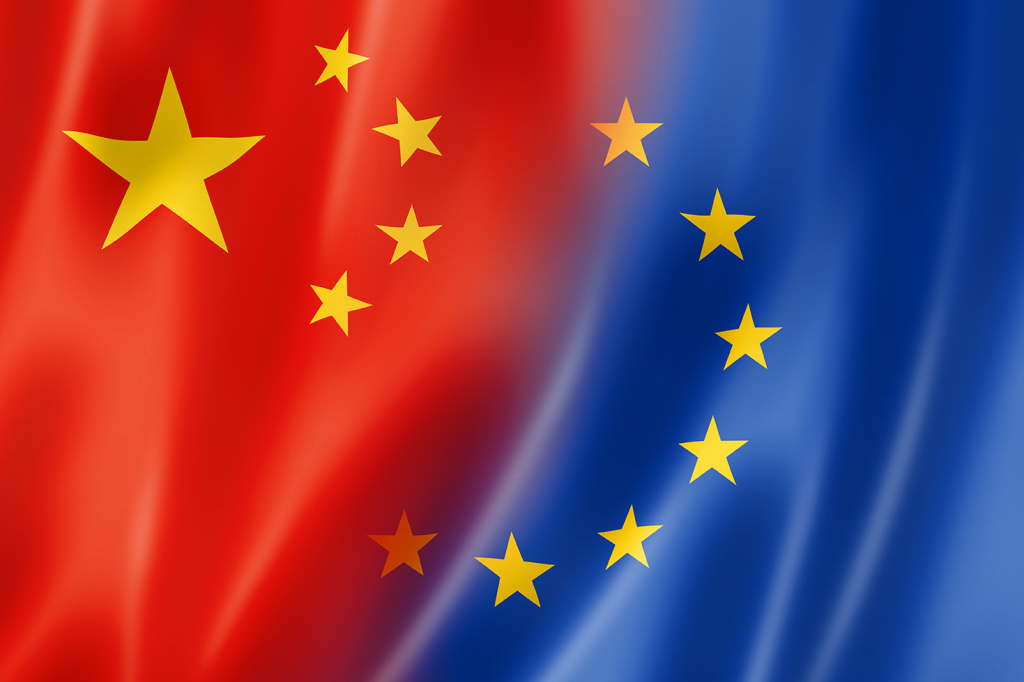The last 10 years have seen significant developments in the legal framework related to intellectual property (IP) in China. As its market opens up, China’s IP system will need to continue to evolve if it is to support the needs of Chinese and international businesses operating in China and maintain a fair and competitive market environment. The EU-China IP Dialogue Mechanism has proved instrumental in helping to lay sound foundations for China’s IP system and ease its convergence with global IP systems. The following article traces its development, outlining some of the numerous accomplishments and what the future holds for cooperation in EU-China IP matters.
On 30th October, 2003, EU Commissioner for Trade Pascal Lamy and Vice Minister Wei Jianguo, Ministry of Commerce, agreed the establishment of a structured EU-China dialogue on intellectual property rights (IPR). The intention was to create a platform where all issues related to the protection and enforcement of IP could be discussed, following many years of cooperation between the EU and China on IP matters.
An annual IP dialogue was officially launched in October 2004, during the 6th EU-China Summit. During this first meeting the European Commission proposed the formation of an IP Working Group, and a year later this working group convened for the first time to discuss the “specific problems the European industry and IP rights holders” were having in China.[1] This first meeting took place with the participation of the European Union Chamber of Commerce in China and its Pharmaceutical Working Group, with a particular focus on IP issues in the pharmaceutical industry.
As things progressed it became clear that the issues being discussed in this working group were not just significant to European industry, they were also hugely relevant to Chinese companies seeking to expand and protect their IP capabilities. Initially chaired just in Beijing, EU-China IP Working Group meetings in 2013 took place in Beijing, Shanghai and Guangzhou, indicating the increasing importance of IP issues outside of the capital. It was in these three cities that one year later the National People’s Congress Standing Committee announced that specialised IP courts would be established, representing another milestone in the progress of China’s IP landscape.
In support of China’s IP system
The EU-China IP Dialogue Mechanism has been complimented down the years by supporting projects such as the EU-China Trade Project (EUCTP) and the EU-China Project on the Protection of Intellectual Property Rights (IPR1, which promoted international standards of IPR protection in Chinese legislation; and IPR2, which covered cross-cutting areas—legal framework, capacity building, training, access to information—and specific areas, such as civil, administration and procedures, enforcement and support for rights holders). The most recent was the launch of the IP Key project in January 2013: implemented and co-financed by the Office for Harmonisation in the Internal Market (OHIM), it is continuing to build on the success of previous EU-China cooperation on IP issues.
In addition, the EU appointed two dedicated, expert ‘IP attachés’ from the OHIM at the European Delegation in China, one from 2008–2011 and the second from 2013–2016. An ‘IP attaché’ from the European Patent Office was also appointed from 2008–2011. This important role is set to continue in the years to come.
Concrete actions
Some of the more significant contributions stemming from these projects have come from legislative exchanges, peer exchanges and comparative analysis, which have helped to increase knowledge and develop common understandings. These interventions have substantially contributed to the adjustment of China’s national IP legislation, which has gone a long way to strengthening economic relations between the EU and China.
The drafting process of China’s laws is a good example of how this has achieved a positive result. The process has allowed for extensive comments and suggestions to be submitted by European businesses, which has brought laws closer to international standards and helped Chinese policy-makers to understand the issues faced by owners of IP; this was particularly relevant in the drafting of China’s Copyright Law. Other revised or new laws and regulations that have been supported include those on patents, trademarks and internet-related rights.
Ongoing cooperation is taking place on amendments to the third revision of the Copyright Law, the forth revision of the Patent Law, the Regulation on Inventor Remuneration and other areas such as anti-unfair competition and protection of trade secrets. There also exists a continuous sharing of best practices on how to police issues in cyberspace—encompassing privacy, security and copyright—which has been necessitated by the rapid technological advances of the last decade.
Another important development includes the 10 plus 10 project, run by the Directorate General for Agriculture and Rural Development (DG AGRI) and the General Administration for Quality Supervision, Inspection and Quarantine (AQSIQ). Under this project, 10 geographical indications from the EU and 10 from China were registered and protected in Europe. Not only does this safeguard consumer rights by preventing a proliferation of counterfeit products from flooding the market, it also commits to future exports of foodstuffs between the EU and China and is an important step towards improving food safety.
Positive developments
The EU welcomed China’s announcement at the end of 2014 that it would create three specialised IP courts in Beijing, Shanghai and Guangzhou. These courts will help to support IP right holders and modernise the Chinese judicial system, with both industry and government agencies closely monitoring and supporting their development.
In March 2014, the Trademark Office of the State Administration for Industry and Commerce (SAIC) joined the global classification tool TMclass, which offers users the opportunity to search and translate terms to and from Chinese, in addition to any of the other 27 available languages. In September 2015, the State Intellectual Property Office joined 34 other participating IP offices in the EU’s Designview IP database, which provides access to more than 8.6 million industrial designs. The SAIC and the OHIM are now working on how to integrate China’s trademark database with the international TMview IP database to help users, from pre-application tests to post registration monitoring, and to provide support to administrative and enforcement agencies worldwide, as well as the general public and enterprises – especially SMEs.
Future cooperation
While technical assistance provides obvious and immediately-tangible benefits, it is the forging of meaningful partnerships with China on IP-related issues that has perhaps been more instrumental in bringing about a convergence of China’s IP system with the rest of the world. The creation of working networks among EU and Chinese agencies has led to greater transparency, and some alignment has been achieved between the two systems. This, in turn, is creating a more predictable, transparent and coherent environment in line with the World Trade Organisation agreements.
This is precisely what the new strategic cooperation between the EU and China is developing. In 2015 alone, IP Key engaged a dozen Chinese IP partners in a large number of activities, covering all areas of IP. These included exchanges related to the reforms of the legal framework for a number of laws and regulations; the development of sustainable networks between EU and Chinese enforcement agencies and the exchange of best practices; information sessions on the EU’s and China’s respective IP systems; the development of databases and repositories of general and specialised IP knowledge; and even the implementation of joint IP tools.
These points were all noted in the memorandum of understanding (MOU) signed in June 2015, between Trade Commissioner Cecilia Malmström and Minister Gao Hucheng, Ministry of Commerce. The MOU announced the upgrading of the IP dialogue to vice-minister level, highlighting the value and importance both sides attach to this cooperation.
Other important aspects detailed in the MOU include joint initiatives on protecting IP rights—including trade secrets and the fight against counterfeiting and piracy in the digital environment—and cooperation between judicial bodies and universities in order to promote the exchange of experiences and practices in the area of IP and joint academic research.
These efforts will continue to contribute to the strengthening of Chinese, EU and other international IP protection practices, and this will ultimately benefit all IP rights holders wherever they reside.
The IP Key project is the European Commission’s financial vehicle for the EU-China New Intellectual Property Cooperation, an agreement between the EU and China. Concluding in 2016, this three-year project is building on the long and productive history of EU-China cooperation on IP issues. IP Key focuses on facilitating the development of an IPR framework in China that is increasingly effective, fair, transparent and otherwise based upon international best practices. It is a platform for cooperation and acts as bridge between EU and Chinese agencies in order to create an IP landscape that benefits both Chinese and EU Industry operating in China.
[1] Intellectual Property: EU China IP Working Group, European Commission, 27th March, 2006, viewed 25th August, 2015, <http://trade.ec.europa.eu/doclib/docs/2010/february/tradoc_145770.pdf>

![shutterstock_274385213 [Converted]](http://www.eurobiz.com.cn/wp-content/uploads/2015/10/shutterstock_274385213-Converted-1024x897.jpg)


Recent Comments